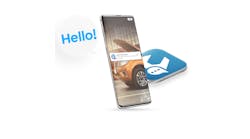Bill Snow started his career as a recruiter, and that experience has come in handy as a business owner.
Snow, the vice president of development and operations at Rad Air Complete Car Care and the owner and operator of its Wickliffe, Ohio, location, has no shortage of experience interviewing job candidates thanks to his past experience as a recruiter.
Snow has only gotten more opportunities to interview as a shop owner, as he’s screened candidates on the phone, set up formal interviews, and arranged working interviews at Rad Air Complete Car Care.
Working interviews are a key tool at Snow’s shop. They help candidates get a feel for the job, staff, and culture; they provide insight into candidates, and they can help determine if the situation is the right fit for the candidate and if the candidate is the right fit for the shop’s culture.
As a shop owner, Snow is always looking for candidates that fit into his company’s culture, but it’s not always easy to determine exactly who might be the right fit. Snow detailed Rad Air Complete Car Care’s interview process and how the perfect working interview can provide the insight you’re looking for into potential hires.
The Process
Snow says the interview process can be three to four interviews long, typically beginning with a phone screen.
If the phone screen goes well, Snow will bring the candidate in for a more formal interview, where either Snow or the manager of the shop will meet with said candidate. And if that goes well, they’ll ask the candidate to come in for a working interview.
Snow says they do this for a few reasons.
“As you can imagine, the way we as owners and managers see our culture is one way, the way it gets lived out may be slightly different in the back,” Snow says, “and the last thing I want to have happen is I portray our culture, and it’s observed differently by a new hire.”
It also gives the shop’s staff a chance to give their input.
“It’s really a great way for us to make sure that both parties want to take it to the next step and hire them on and have them as one of our team members,” Snow says.
The candidate gets a chance to work with other technicians, and they can talk about life, and family and get a feel for what it would be like to work together. Additionally, they may have a team lunch that day—something Snow says is a part of their shop’s culture—to further build those connections.
If the working interview goes well, Snow says that typically results in an offer.
Fitting the Culture
Well, that might all sound great, but how does one truly tell whether a candidate fits into your company’s culture? What are you looking for from a candidate in that working interview?
For Snow, it starts with communication. At Rad Air Complete Car Care, their culture is centered on camaraderie and a team approach. If a candidate demonstrates good communication skills and shows the ability to build connections with the team, they’re off to a pretty good start.
“I know it could be nervous for a candidate doing this working interview,” Snow says, “but if they’re able to come out of their shell pretty early in the day and be able to interact—and we’ve seen it actually where there’s some banter, some fun banter going back and forth already—you know, and we’re like, ‘Listen, that’s a perfect fit for what we do.’”
In terms of what might dissuade Snow from a candidate, he says some conflicting information may come out in working interviews. A candidate might exaggerate their skills in the interview, and then present a little more honest picture of their skillset once they get under a car with fellow technicians.
“It’s kind of a technician code or that comfort level that can come out, and we’ve had that happen at some working interviews,” Snow says.
Additionally, Snow says egos tend to come out during working interviews.
“(If) someone becomes standoffish, are very opinionated on a way to approach a job we might have in the shop, or ‘Hey, you’re doing it wrong. This is how we do it at my place.’ That approach,” Snow says, “if it comes out, could be a red flag for someone hiring a technician as well.”
Team Input
Snow values team input after working interviews “very heavily.”
By the time a candidate reaches a working interview, Snow is pretty comfortable bringing them aboard. The final test is whether that candidate fits in with the shop, its culture, and the rest of the staff.
Additionally, with the staff having input into the hire, Snow says they have some “skin in the game,” having to work with the new hire day in and day out.
If they decide to bring in a young technician, it becomes everyone’s responsibility to make sure they’re trained properly and are put into a position to survive and thrive.
“If we all agree we’re going to hire this person, in three months we can’t say it’s not working out, let’s throw them out,” Snow says. “Now, if we did everything we could and it still isn’t working, and there’s just something that came up after the process, that’s one thing. But if we fail to give them the proper coaching and mentoring, access to training, the feedback, that sort of stuff, then that’s on us. It gives [the staff] more sense of responsibility being involved at that level.”
Making the Call
Snow makes a decision pretty quickly after the working interview. He’ll weigh the team input, do a debrief call with the candidate, and determine whether it’s time to move forward.
If the interview went well, the team loves the candidate, and they seem to fit into the culture, Snow will bring them on. If there’s cause for pause, they may conduct another interview to feel out the candidate a little more. And some just won’t make the cut.
Another key factor in making the determination on a candidate is whether they are committed to learning. Snow’s staff is expected to get 40 hours of training per year, minimum, and if a candidate is not interested in earning additional certificates and improving their status, they probably aren’t the right fit for Rad Air Complete Car Care.
Building Toward Success
The goal hasn’t been achieved once the new hire has been made. After making the hire begins the process of building employees toward success—something Rad Air Complete Car Care tries to do the moment the new employee steps through the door.
Snow’s shop tries to maintain a family atmosphere, and he wants to make sure new hires feel like they’re a part of the Rad Air Complete Car Care family right away, giving them a “welcome” card and some merch as they begin the onboarding process.
For younger technicians, they’ll do a longer and more structured onboarding process to ensure their newest employee has been put in a position to succeed. They’ll give them goals to hit, and the opportunity to hit them.
Additionally, Snow says it’s important for an owner to share their vision with the staff, keep them updated on what’s happening around the shop, and show them the direction you’re heading.
And it never hurts to check in with your employees regularly, just to make sure everything is going OK.
“You just can’t assume things are going well because you haven’t heard anything,” Snow says. “And you’ll never understand how much they appreciate working for you until you talk to them and let them know that you appreciate their efforts and everything.”
Keys to Perfecting the Working Interview
- Show your side: Don’t change things up when the candidate comes in, proceed with day-to-day operations. Show your shop’s culture, don’t act like you’re hosting a guest.
- Let ’em work: Work is in the name. Let the candidate get their hands dirty, meet the team, and get a feel for what the job will entail.
- Talk to the team: Weigh team input and value it. If your staff has a bad feeling, perhaps it’s not meant to be.
- Make the call: After talking to the team, make a decision whether to hire the candidate, while of course, weighing team input.
- Help after hire: The job doesn’t end after you’ve brought a new employee aboard. Continue to remain available and help build them towards success.




